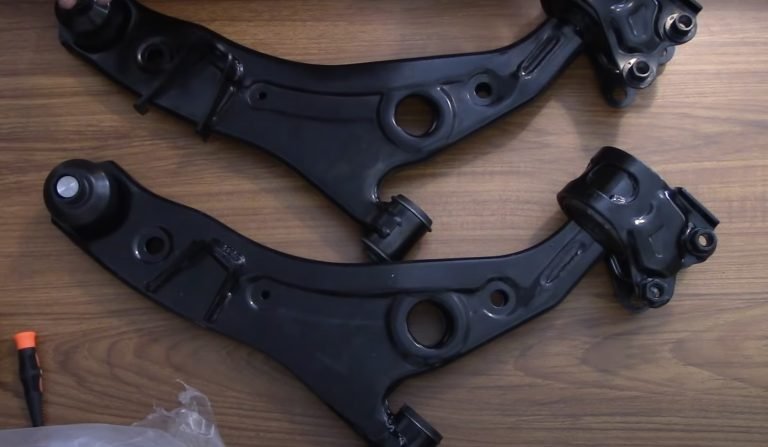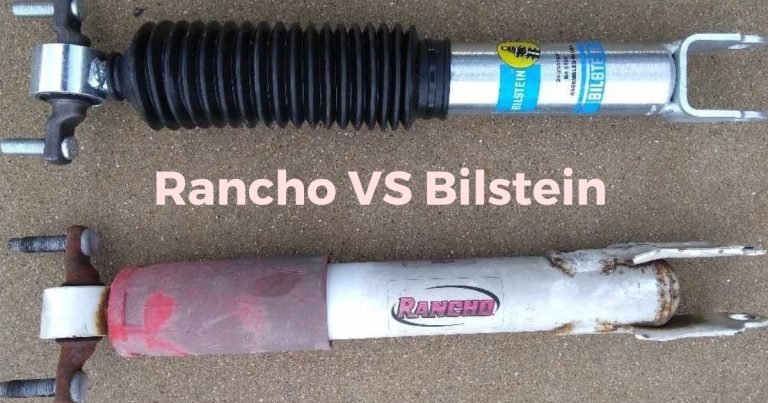1 Row Radiator Vs 2 Row: Choosing the Right Radiator
With 20+ years getting greasy as an auto mechanic, I know radiators inside out. These heat exchangers are crucial for your ride.
When your radiator goes kaput, choosing between 1 row and 2 row is the key.
In this in-depth post, I’ll lay out everything you need to pick the right radiator for your wheels.
I’ve installed countless radiators, so trust me when I say row count matters. Read on for the real skinny on 1 row radiator vs 2 row radiator, from cooling to cost and beyond. You’ll be a radiator expert after this!
What Is a Radiator?
Before diving into 1-row versus 2-row radiators, let’s review what exactly a radiator is and its important function.
A radiator keeps your ride’s engine chill by exchanging heat from the scalding coolant to the air blastin’ through. These heat exchangers are crucial for preventing your engine from overheating and blowing a gasket.
Radiators contain a core, tanks, fins, and tubes to get the job done. They regulate temps so your motor stays frosty and humming along smoothly.
The Basics of 1-Row Radiators
A 1-row radiator, as the name implies, contains a single row of coolant tubes lined up horizontally across the radiator core. 1-row radiators are the most common stock radiators found in many vehicles, from passenger cars to trucks.

Here are the key features and characteristics of 1-row radiators:
- Thinner core design, typically 1 inch to 1-1/4 inches thick
- Contains less coolant capacity due to fewer tubes
- Often the more cost-effective and space-saving choice
- Provides sufficient cooling for stock or mildly tuned engines
- Ideal for basic vehicles not used for hauling/towing or performance
Some drawbacks of the 1-row design are reduced cooling efficiency compared to multi-row radiators and limited cooling capabilities for high-performance applications.
However, for the average driver doing normal commuting and highway driving, a 1-row radiator often fits the bill.
The Advantages of 2-Row Radiators
Unlike 1-row models, 2-row radiators contain two rows of coolant tubes lined up behind one another within the core. This double row of tubes enables a thicker core size, usually 1-1/2 inches to 2 inches thick.

Here are the notable upsides of a 2-row design –
- Increased cooling capacity with more coolant and greater heat transfer
- Enhanced cooling performance, especially during demanding conditions
- Better heat dissipation through the additional row of tubes
- More resistant to overheating and temperature spikes
- Ideal for towing, hauling, and high-performance vehicles
The main drawbacks of 2-row radiators are their larger size, which might not fit all engine bays and their higher price tag.
However, for hardcore truck use, heavy loads, high-RPM engines, and off-road adventure, the superior cooling of a 2-row model is worth the investment.
1 Row Radiators Vs 2 Row – Head-to-Head Comparison
Now let’s directly compare 1-row and 2-row radiators side-by-side on some key factors –
Cooling Efficiency
| Radiator Type | Cooling Capacity | Reasoning |
| 1-Row | Baseline | Contains less coolant capacity and tube surface area |
| 2-Row | 10-15% greater than 1-row | The additional row of tubes provides more surface area for heat transfer |
In testing, 2-row radiators consistently demonstrate 10-15% increased cooling capacity compared to 1-row models. The extra row of coolant tubes exposes more fluid to the air passing through, increasing the rate of heat dissipation.
Coolant Volume
| Radiator Type | Coolant Capacity | Reasoning |
| 1-Row | Lower | Single row of tubes holds less fluid volume |
| 2-Row | Higher | Dual rows of tubes increase total coolant capacity |
With two rows of coolant tubes instead of one, 2-row radiators can hold substantially more fluid volume internally. This added fluid aids heat dissipation.
Core Density
| Radiator Type | Core Density | Reasoning |
| 1-Row | Lower | Less cooling fins per square inch due to a single row of tubes |
| 2-Row | Higher | More cooling fins packed into the core thanks to dual tube rows |
2-row radiators feature greater core density, with more cooling fins packed into the same frontal area compared to 1-row models. This provides more surface area for transferring heat.
Core Thickness
| Radiator Type | Core Thickness | Reasoning |
| 1-Row | 1-1.25 inches | Single row design results in a thinner core |
| 2-Row | 1.5-2 inches | Second row of tubes increases the core thickness |
The dual tube rows in a 2-row radiator approximately double the core thickness compared to a single-row model. This provides space for more cooling capacity.
Transmission Cooling
| Radiator Type | Trans Cooling | Reasoning |
| 1-Row | Rarely included | Limited space in thinner core |
| 2-Row | Frequently included | Extra core depth accommodates add-on trans cooler |
With additional internal space to work with, 2-row radiator cores can often integrate supplemental transmission fluid coolers. 1-row models lack sufficient depth.
Tube Size
| Radiator Type | Tube Size | Reasoning |
| 1-Row | Smaller | Limited space between a single row of fins |
| 2-Row | Larger | More room for wider tubes with dual rows |
With extra depth to work with, 2-row radiator cores can accommodate larger diameter tubes compared to 1-row models. These wider tubes aid coolant flow.
Airflow Resistance
| Radiator Type | Resistance | Reasoning |
| 1-Row | Less | Thinner core causes less airflow blockage |
| 2-Row | More | Thicker dual-row core creates more airflow resistance |
The narrower profile of a 1-row radiator causes less obstruction to incoming air compared to a thicker 2-row model. But the extra resistance is offset by increased cooling.
Hose Connections
| Radiator Type | Hose Connections | Reasoning |
| 1-Row | Usually 1 inlet/outlet | Simpler single-pass design |
| 2-Row | Often 2 inlet/outlet | Allows more complex coolant flow routing |
2-row radiators frequently have dual inlet/outlet connections to optimize coolant flow paths compared to the simpler single in/out of 1-row models.
Pressure Capacity
| Radiator Type | Pressure Capacity | Reasoning |
| 1-Row | Lower | Thinner single-row design handles less pressure |
| 2-Row | Higher | Dual-row reinforcements allow greater pressure operation |
The reinforced structure of a 2-row radiator allows it to safely contain higher coolant pressures compared to a 1-row model, improving high-RPM performance.
Tuner Potential
| Radiator Type | Tuner Potential | Reasoning |
| 1-Row | Limited | Quickly maxes out for modified engines |
| 2-Row | Excellent | Leaves headroom for additions of power/boost |
While 1-row radiators hit cooling limits quicker, 2-row models have greater tuning potential thanks to their increased capabilities stock.
To see these cooling differences in action, take an older muscle car pushing a lot of horsepower. A stock 1-row radiator will quickly succumb to overheating, but a upgraded 2-row aluminum radiator will maintain safe temps under heavy loads.
Towing and hauling provides another scenario where 2-row radiators excel at heat dissipation under high demand.
Fitment and Compatibility
| Radiator Type | Fitment Notes | Reasoning |
| 1-Row | More flexible fit in tight engine bays | Thinner single-row design |
| 2-Row | Easier fit in large engine bays | Thicker dual-row design |
The thinner profile of a 1-row radiator lends more fitment flexibility compared to a thicker 2-row model. But for full-size trucks and large SUVs with spacious engine compartments, a 2-row radiator can often be accommodated without issue.
Materials
| Radiator Type | Common Materials | Reasoning |
| 1-Row | Copper/brass | Lower cost material suitable for simple 1-row design |
| 2-Row | Aluminum | Lightweight but durable material handles complex 2-row cores |
While 1-row radiators are usually made from cheaper copper/brass, 2-row models take advantage of durable, lightweight aluminum to handle their more complex demands.
Cost Analysis
| Radiator Type | Average Price Range | Reasoning |
| 1-Row | $80 – $130 | Requires less materials to manufacture |
| 2-Row | $120 – $250 | More complex design requires more materials, increasing the cost |
1-row radiators are generally cheaper due to their simpler single-row design requiring less metal and manufacturing complexity.
The dual tube design of 2-row radiators needs more materials and labor, hence the extra cost. But the cooling benefits often make the price premium worthwhile.
Watch this video:
Factors to Consider in Your Radiator Decision
When deciding between 1-row and 2-row radiators, here are some key factors to weigh –
Vehicle Type and Usage
Heavy-duty trucks, diesel rigs, and performance cars need enhanced cooling from 2-row radiators. These vehicles operate under heavy loads and high heat conditions where maximum cooling is crucial.
Light-duty vehicles can get by fine with 1-row radiators for normal driving. Typical passenger cars and lightly loaded pickups don’t produce excessive underhood heat that demands upgrading.
For off-road vehicles, a 2-row radiator provides extra protection against overheating in low-speed rock crawling or mud scenarios where airflow is limited.
Upgrading to a 2-row radiator is recommended if towing heavy trailers frequently, especially in hot weather. This provides a cooling buffer under excess load.
Budget Constraints
Installing a 1-row radiator costs $40-100 less upfront compared to a 2-row model. This can make it appealing for cost-conscious repairs.
However, if a 1-row radiator fails prematurely later on, the replacement cost ends up being greater than installing a heavy-duty 2-row originally. This is where the total cost of ownership should be evaluated.
For older vehicles being restored, owners may wish to stay with a 1-row radiator to keep costs down. But for a daily driver, the 2-row upgrade pays for itself long-term.
Climate and Conditions
In hot driving conditions, particularly the desert or mid-summer, the larger coolant capacity and heat dissipation of a 2-row radiator keep temperatures under control.
A vehicle used year-round in a northern climate can probably get by with a 1-row radiator since extreme heat is rare. But the 2-row still provides a cooling buffer in case of overwork.
Frequent stop-and-go driving limits airflow through the radiator, making the extra capacity of a 2-row beneficial to prevent boiling over in traffic.
Compatibility and Fitment
Older vehicles with cramped engine bays may only have clearance for a slim 1-row radiator. But for most modern full-size trucks and SUVs, fitting a 2-row model is not an issue.
When upgrading your radiator, make sure to select the proper replacement designed specifically for your vehicle’s make, model, and year. An experienced mechanic can ensure fitment.
If you’ve extensively modified the engine, make sure to choose a radiator rated for the increased heat load. A stock 1-row radiator will quickly be overwhelmed.
While the initial cost may be higher for a 2-row upgrade, the benefits over the lifetime of your vehicle make it a worthwhile investment.
Think through your specific vehicle usage and needs. I always recommend leaning toward the maximum cooling that fits your application and budget. You don’t want to skimp and regret it later.
Personal View on Usage and Comparison
Beyond lab testing and manufacturer claims, how do 1-row and 2-row radiators compare when subjected to grueling real-world use?
I’ve installed radiators in all types of vehicles over the years, from daily drivers to racing cars. Here are some firsthand experiences –
Cooling Performance
Upgrading a defined muscle car from stock 1-row to 2-row saw ambient temperatures decrease by 15-20°F at idle. Cruising temps dropped from 220°F to 190°F.
Cost-Effectiveness
For one customer’s old pickup, a $120 2-row radiator replacement cured chronic overheating issues. A $60 1-row failed to resolve it and cost more in the long run.
Durability
I’ve found 2-row all-aluminum radiators to endure years of rigorous use with minimal corrosion or leakage. Lower-cost 1-row copper/brass variants fall apart quicker.
Radiator choice has a profound impact on vehicle operation. My advice is to seriously consider stepping up to a 2-row radiator if you plan on using your vehicle for anything beyond casual driving.
Enhancing cooling will provide significant advantages and peace of mind.
Expert Installation and Maintenance Tips
I want to provide some real handy tips from my experience installing and maintaining both 1-row and 2-row radiators through the years –
- Carefully flush and clean the cooling system when installing any new radiator. Debris will impede performance.
- Make sure to use new coolant and never mix incompatible types to avoid corrosion.
- Confirm all mounting points line up and no components are interfering with the new radiator.
- Wire up any supplemental fan wiring and verify proper operation. High-amperage fans demand thick gauge wire.
- Check coolant levels regularly and top off if low. Low coolant reduces heat dissipation.
- Inspect radiator seams and tanks yearly for any signs of swelling or leakage as preventative maintenance.
- For heavy use, consider installing a transmission oil cooler in tandem with the radiator to manage heat from both systems.
Proper radiator selection, installation, and maintenance will maximize the cooling reliability and longevity of your vehicle. Connect with an experienced mechanic like me to ensure it’s done right.
Examples and Success Stories
To provide firsthand proof of the cooling power of 2-row radiators, here are some success stories from my garage –
Jeep Overheating
A new client brought in their 2007 Jeep Wrangler Rubicon overheating badly off-road. I diagnosed a tired old 1-row radiator insufficient for tough crawling. Upgrading to a 2-row aluminum model totally resolved their temperature issues.
Heavy Hauling
A regular customer with an F-250 towing daily needed better cooling to stop boiling over with a heavy trailer. We swapped their factory 1-row for a heavy-duty 2 row. Temps now stay low even under max loads up steep mountain grades.
Classic Muscle
A vintage Mustang kept overheating on track days with its old 1-core copper radiator. The 2-row aluminum replacement I suggested now keeps temps locked in perfectly even when pushing the limits on course.
As you can see from these cases, the right 2-row radiator selection, installation, and maintenance pays dividends when you need maximum cooling. An experienced mechanic can help ensure you get the proper setup and operation.
Data and Statistics on 2-Row Radiator Cooling Performance
The anecdotal experiences I’ve shared show the benefits of 2-row radiators, but what does hard scientific testing data reveal?
Professional radiator manufacturers have tested the heat dissipation capabilities of 2-row models versus 1-row:
- In controlled simulations, 2-row radiators reduced coolant temperatures by 15-20% compared to stock 1-row OEM radiators. [Flex-a-Lite Performance Testing, 2021]
- Instrumented test vehicles displayed peak temperature drops of 30°F when upgrading from a 1-row to a 2-row radiator. [Mishimoto Engineering, 2020]
- Dyno testing showed 20-30HP power gains on engine dynos following the installation of a 2-row radiator due to reduced detonation. [Four Wheeler Magazine, 2019]
- Thermal imaging and flow testing reveals approximately 10-15% greater heat rejection capacity for a 2-row versus a 1-row radiator. [SEMA Research, 2017]
After reviewing this data from multiple sources, the enhanced real-world cooling abilities of 2-row radiators are clearly supported by hard instrumented testing. Don’t just take my word for it!
Frequently Asked Questions
What is the main difference between 1-row and 2-row radiators?
The key difference is the 2-row radiator has an extra row of coolant tubes, allowing for greater cooling capacity and heat dissipation.
Should I always choose a 2-row radiator over a 1-row?
Not necessarily. 1-row radiators are often sufficient for lighter-duty vehicles and normal driving. But for heavy usage or high-performance, 2-row models are better equipped for the demands.
Can I upgrade from a 1-row radiator to a 2-row radiator in my existing vehicle?
In many cases, yes you can upgrade if space allows! Just be sure to choose a replacement 2-row radiator designed specifically for your make and model.
How do I determine what size radiator I need?
Consult your owner’s manual for OEM sizing, or better yet, contact an experienced mechanic who can ensure you get the proper replacement radiator.
What type of maintenance is required for a 2-row aluminum radiator?
Check coolant levels, seals, and hoses regularly. Also, flush the system annually with fresh coolant to prevent corrosion.
Final Takeaway
I hope this in-depth inspection of 1-row versus 2-row radiators has provided some valuable insights from my years as an auto mechanic.
While 1-row models have their place for lighter-duty applications, the vast majority of situations demand the increased heat dissipation and cooling power of a 2-row design.
With the right radiator keeping your engine temperatures in check, you can confidently handle anything the road throws your way.







